Historic English Quilts from the V&A in Brisbane, Australia
An inspirational exhibition featuring over 200 years of British quilt-making is now on show at the Queensland Art Gallery in Brisbane, Australia, until 22 September 2013. The works in ‘Quilts 1700-1945‘ come primarily from the important collections of the Victoria & Albert Museum, London, the world’s leading decorative arts and design museum.
The exhibition includes three dozen hand crafted quilts, bedcovers and bed hangings, handed down through the generations, that were created as familiar domestic textiles which provide comfort, yet also tell hidden stories that commemorate historical events and family occasions. Sewing accessories associated with the bed covers, such as pin cushions, needlework tools and sewing baskets are also on show.
The exhibition is divided into four thematic sections: the domestic landscape of the wealthy bedrooms of 18th century Britain; the private thoughts and political debates that emerged as patchwork spread to aspirational middle class homes in the early 19th century; the movement of quilts to the public sphere for exhibition and display in Victorian England; and the survival of quiltmaking in economically deprived areas in the face of the emergence of mass production in the early 20th century.
The display also includes the Rajah quilt –an extraordinary patchwork cover sewn by convict women on board HMS Rajah during their transportation to Van Diemen’s Land (Tasmania) in 1841, on loan from the National Gallery of Australia.

Possibly Francis Brayley / Military quilt 1864–77 / Wool / Collection: Victoria and Albert Museum, London / © Victoria and Albert Museum, London
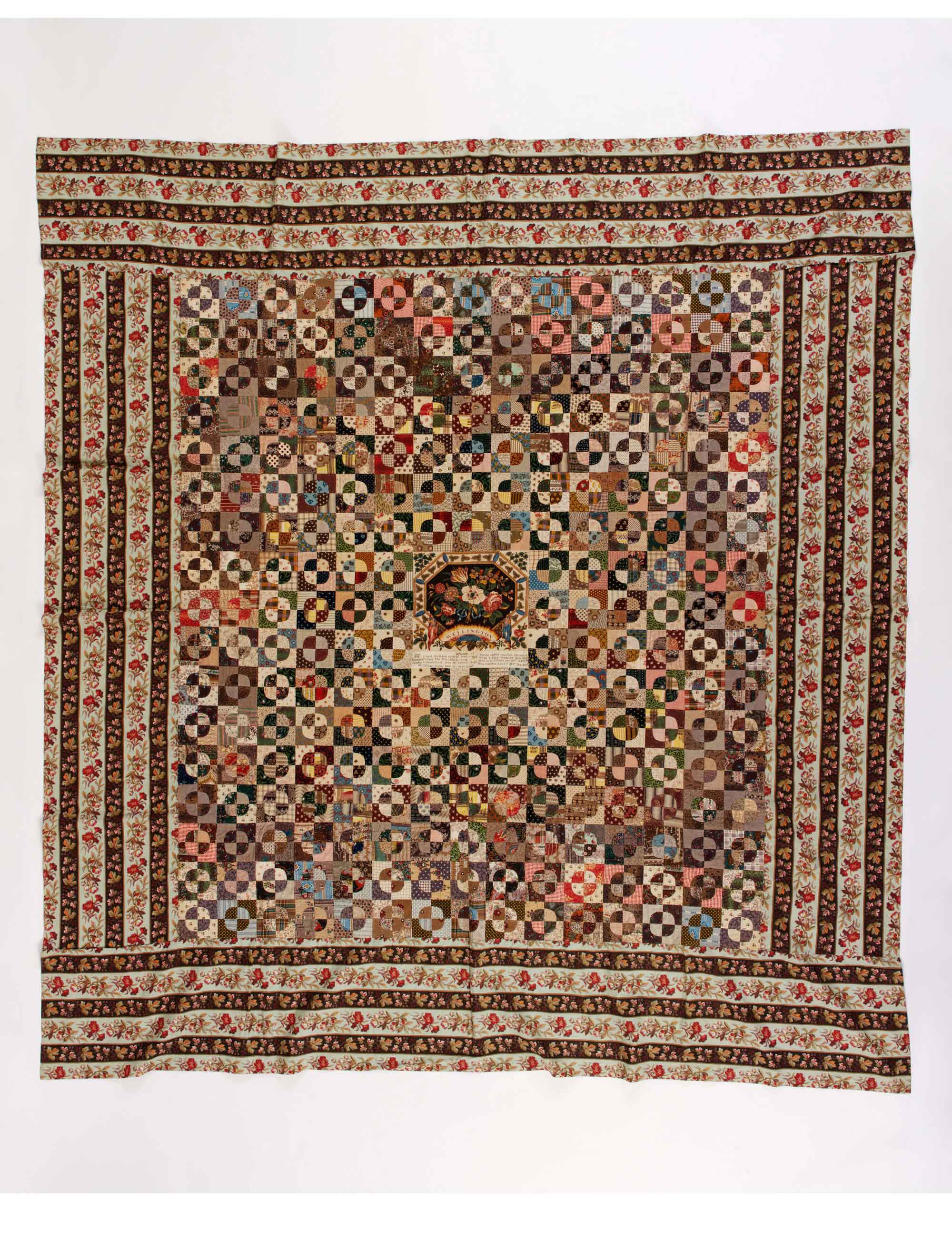
Elisabeth Chapman / Coverlet commemorating Wellington c.1829 / Cotton / Collection: Victoria and Albert Museum, London / © Victoria and Albert Museum, London
Coverlet Commemorating Wellington, 1829
Family history associates this coverlet with the marriage of John and Elisabeth Chapman. The block printed panel used at the centre of this patchwork coverlet was printed to commemorate Wellington’s victory at Vittoria, the last battle of the Peninsula War in 1813. The range of dates in the coverlet, including papers dating from the 1790s and the date of the central commemorative panel, suggests that it was worked on for a number of years, but never finished as the tacking stitches have not been removed.
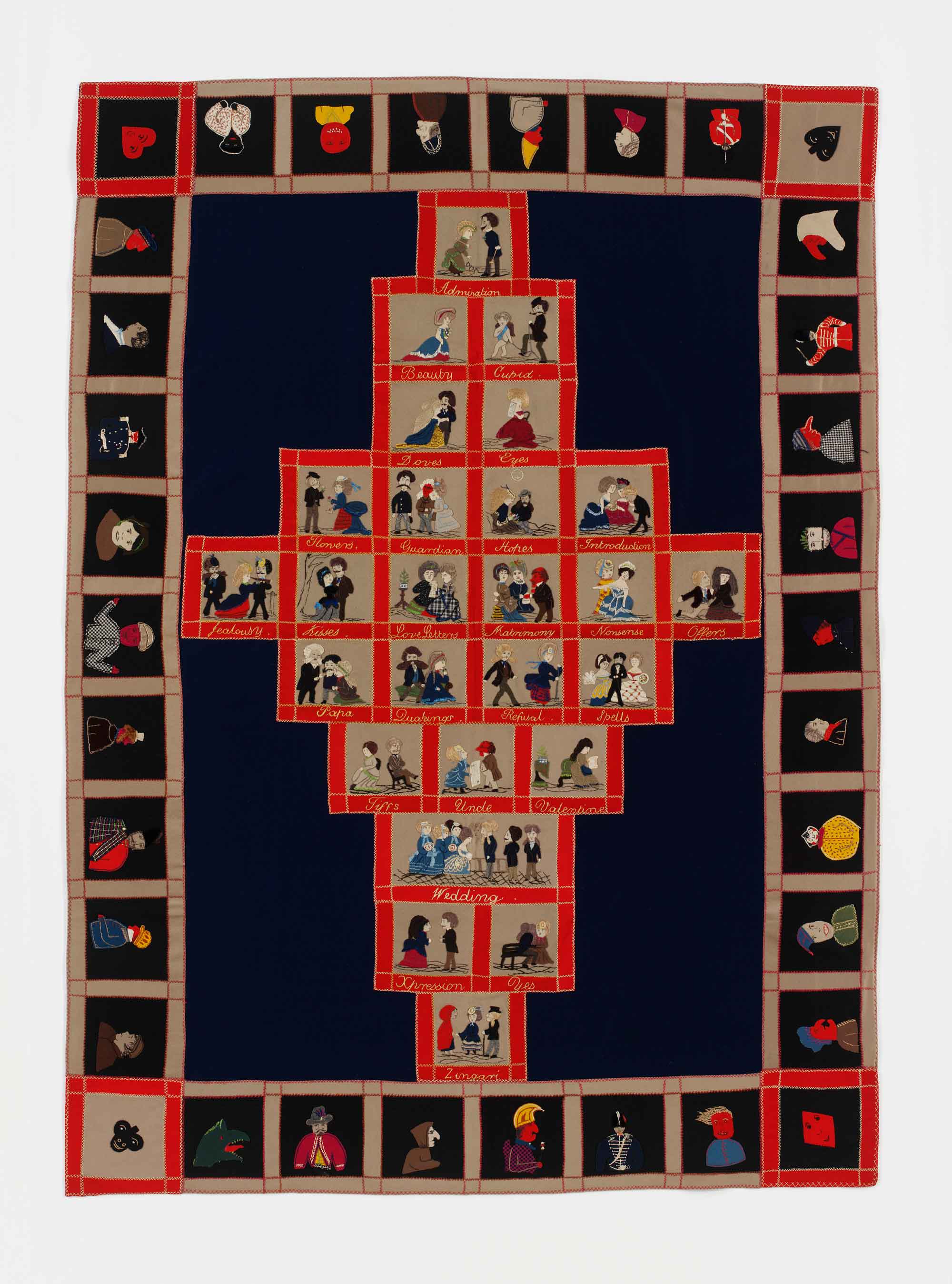
Maker unknown / Cover or hanging showing alphabet of love and courtship 1875–85 / Wool / Collection: Victoria and Albert Museum, London / © Victoria and Albert Museum, London
Cover or hanging showing Alphabet of Lover and Courtship 1875–85
The central panels of this quilt depict the various rituals and emotions associated with courtship, moving from ‘Admiration’ to ‘Zingari’ (an archaic term for the Romany community). These images are framed by a border that makes reference to an array of cultural figures and symbols, including fairground favourites such as Mr Punch, and gaming card motifs in the four corners. Coupled with the size of the object, these references suggest that it may have been created in relation to a card game. Textiles with playing-card motifs became particularly popular in the 1880s and ’90s.
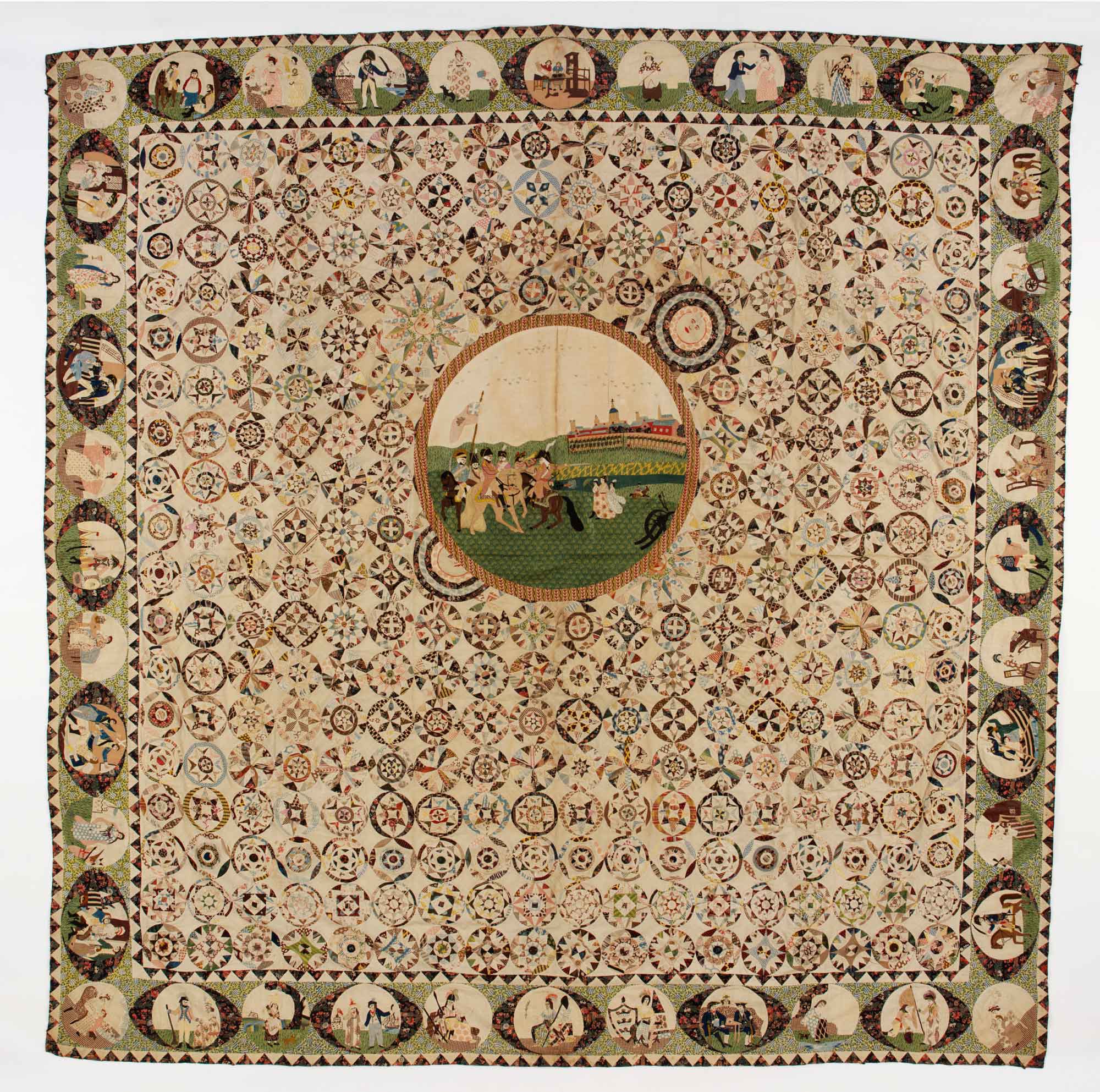
Maker unknown / Coverlet with King George III reviewing the troops 1803–05/ Cotton / Collection: Victoria and Albert Museum, London / © Victoria and Albert Museum, London
Coverlet with King George III reviewing the troops 1803-05
This patchwork coverlet was worked during a period of intense naval euphoria. The central scene shows King George III reviewing the volunteer troops, and is based on a painting by John Singleton Copley (1738–1815) His Majesty reviewing the volunteer corps (1799). On 4 June 1799, King George III carried out a review of 15,000 volunteer troops at Hyde Park, London. In several scenes, a small, red-haired figure appears alongside soldiers and sailors. Absent from the original prints, this may well be a self-portrait of the maker.
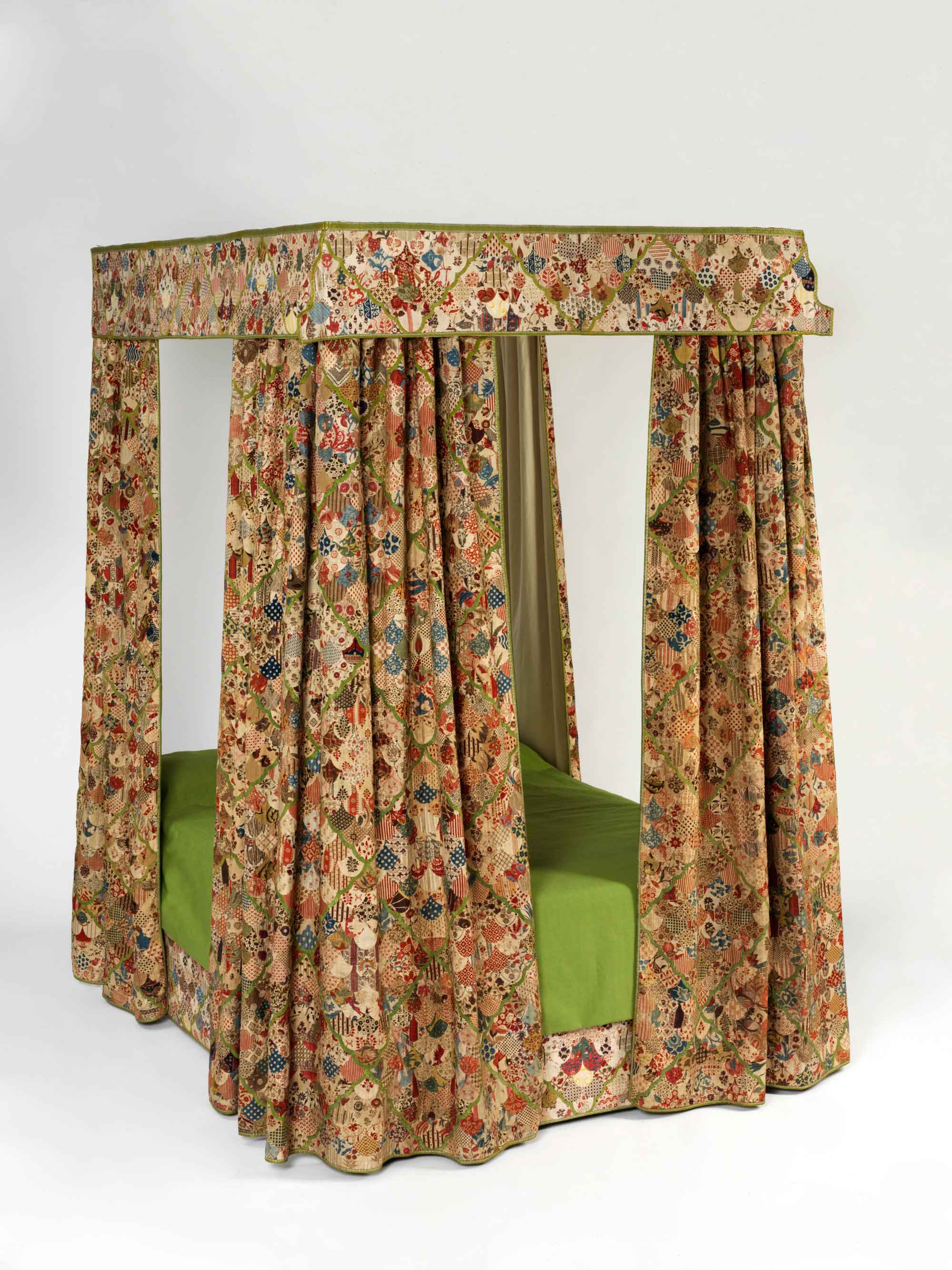
Maker unknown / Patchwork bed hangings 1730-50 / Cotton, linen, fustian and silk / Collection: Victoria and Albert Museum, London / © Victoria and Albert Museum, London
Patchwork bed hangings 1730–50
This is the only set of chintz bed hangings from this period that survives in a public collection. They would have been created for a fashionable middling or aristocratic household. The original use of the word ‘chintz’ was for Indian cotton cloth on which a pattern was produced by hand-drawing and dyeing with mordants and resists. While there was immense enthusiasm for chintz among British consumers in the late seventeenth century, there were also many opponents to the imported Indian goods, including the weavers of wool, linen and silk. In a bid to protect British manufacturing, a law was passed in 1701 to forbid the import of dyed or printed cottons and silk from India into Britain, except for re-export. Despite this ban, the overwhelming fashion for these light, colourful textiles led the writer Daniel Defoe to comment that it had: “.. . crept into our houses; our closets and bedchambers, curtains, cushions, chairs and at last beds themselves were nothing but calicoes and Indian stuffs, and in short almost everything that used to be made of wool and silk.”
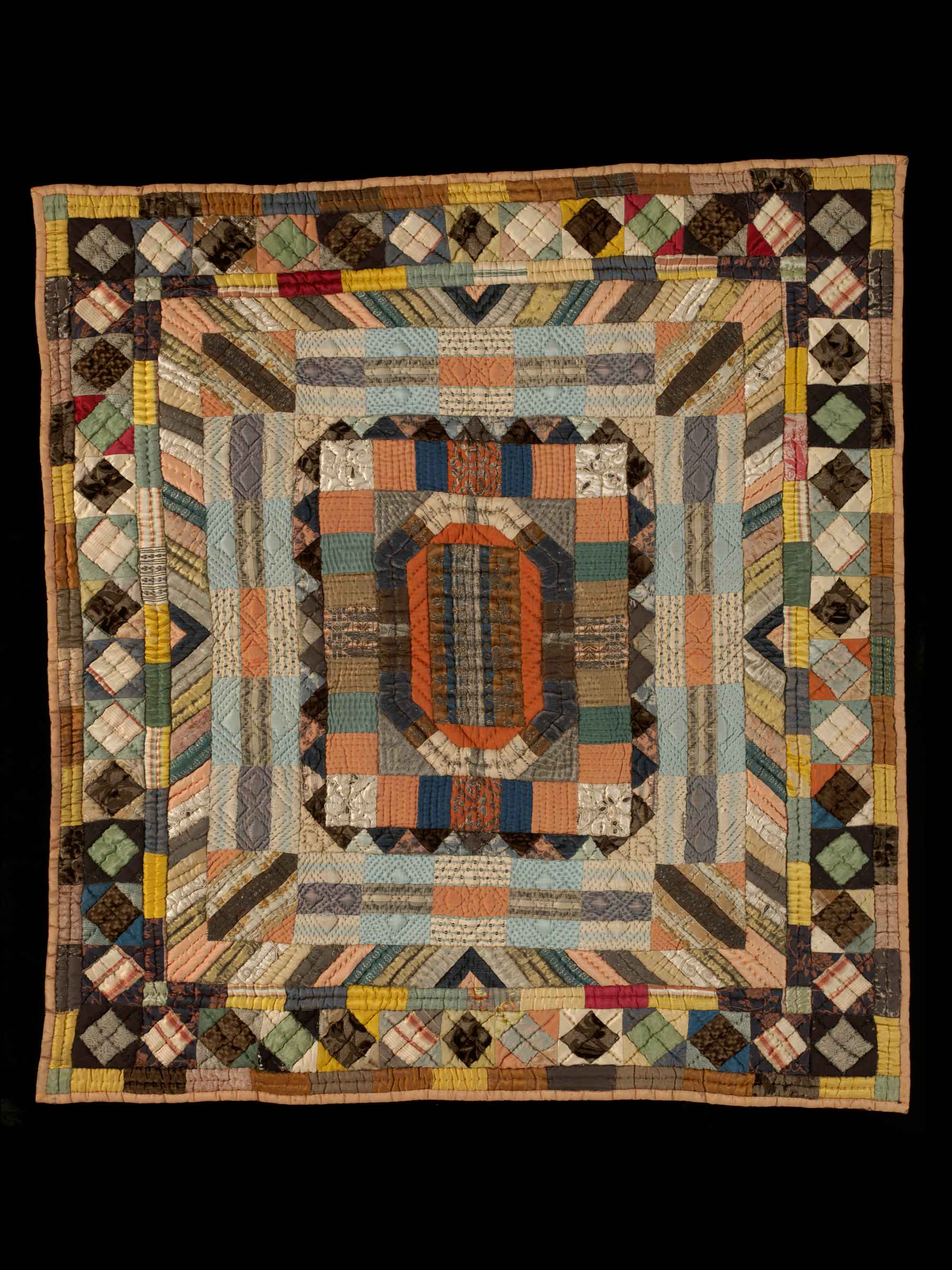
Priscilla Redding / Quilted cot cover for a child’s bed 1690–1720 / Silk / Collection: Victoria and Albert Museum, London / © Victoria and Albert Museum, London
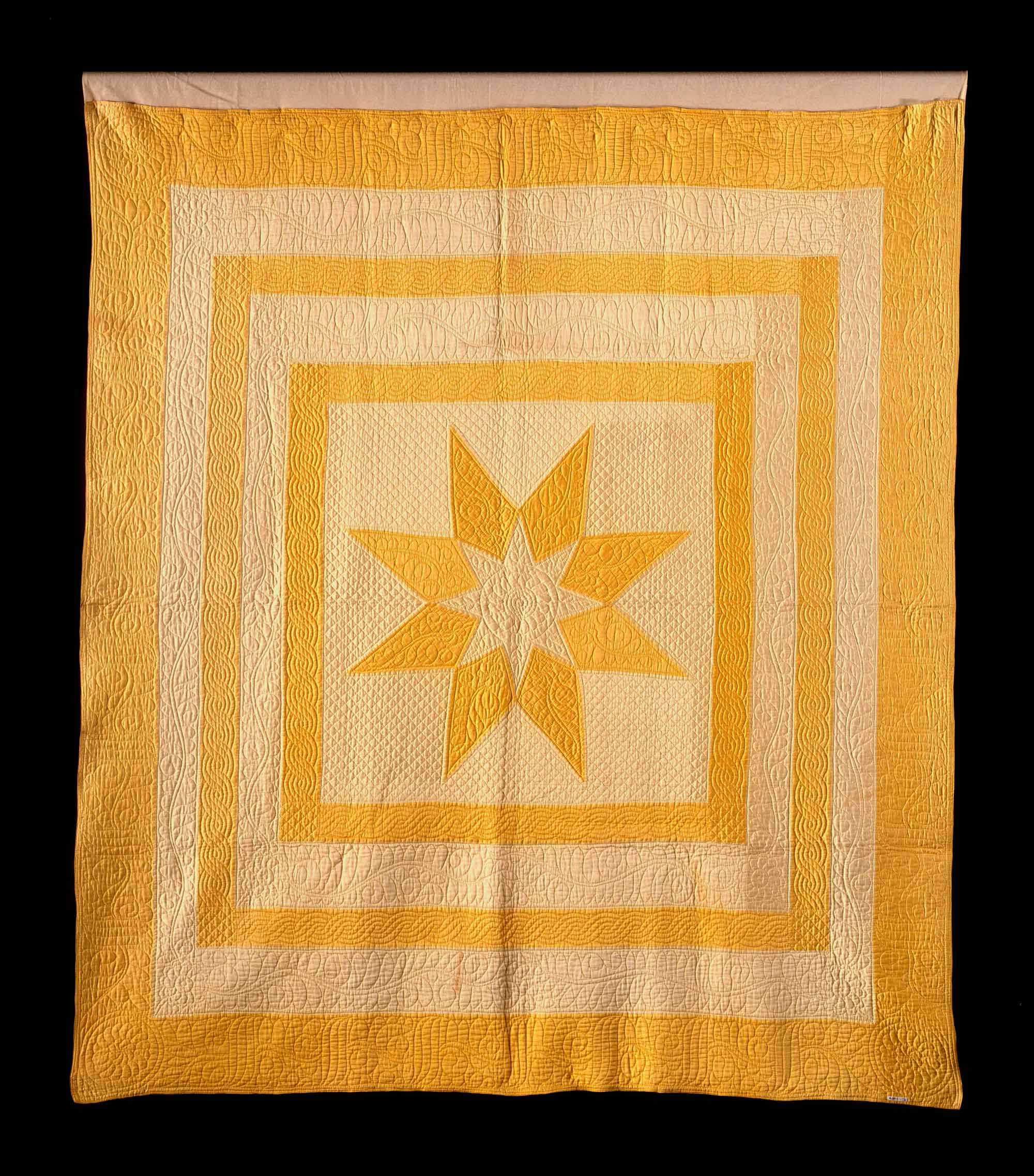
Maker unknown / ‘Sanderson Star’ bedcover 1910–20 / Cotton / Collection: Victoria and Albert Museum, London / © Victoria and Albert Museum, London
Sanderson Star bedcover 1910–20
The design of this bedcover, originally conceived by quilt designer Elizabeth Sanderson, was much emulated in the early 20th-century. Although this quilt cannot be attributed to Sanderson, it testifies to her significance as a designer and teacher. She had a profitable career as a ‘stamper’ marking out quilt-top designs in blue pencil for quilting by professional or domestic quilters. She ran an apprentice system, training young girls in stamping at her house so that they could eventually be hired as professional markers.

Unknown female convicts on board the Rajah / The Rajah quilt 1841 / Pieced medallion style unlined coverlet: cotton sheeting and chintz appliqué, silk thread embroidery / 325 x 337.2cm / Gift of Les Hollings and the Australian Textiles Fund 1989 / Collection: National Gallery of Australia, Canberra
The Rajah Quilt, 1841
In 1816, Elizabeth Fry formed the British Ladies’ Society for the Reformation of Female Prisoners. They donated sewing supplies to women in prison and soon turned their attention to convict ships bound for Tasmania. Fabric, thread and needles were carried on board HMS Rajah by 180 women prisoners when it set sail from Woolwich on 5 April 1841. When the ship arrived in Hobart, the women had produced The Rajah quilt. Now in the National Gallery of Australia Collection, it is one of Australia’s most important historic textiles.

AnnWest / Patchwork with Garden of Eden 1820 / Wool / Collection: Victoria and Albert Museum, London / © Victoria and Albert Museum, London


























Comments [0] Sign in to comment